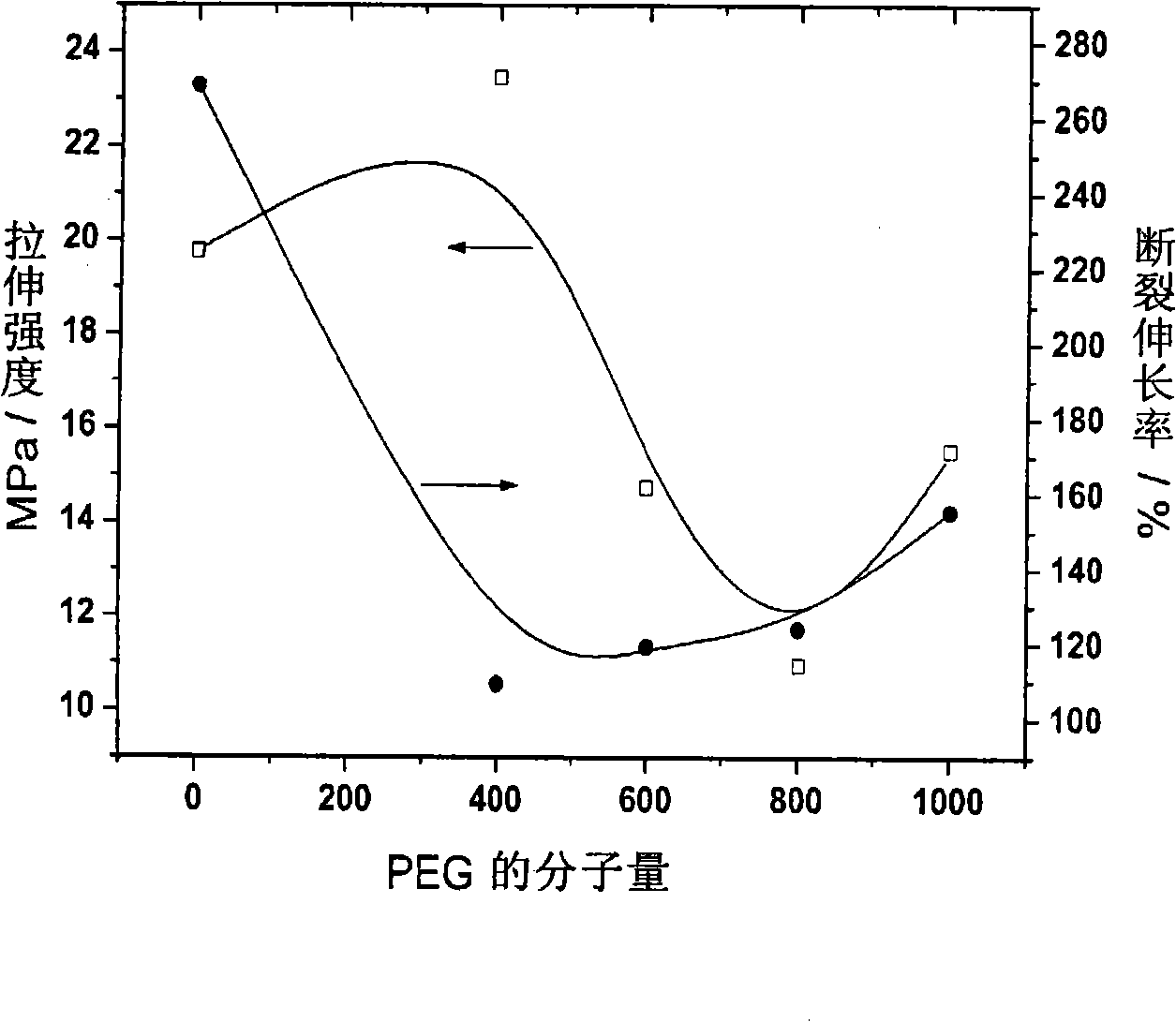Method for preparing permanent antistatic agents
An antistatic agent and permanent technology, applied in the field of polymer material preparation, can solve the problems of mechanical properties and processability, serious pollution of carbon black dust, high cost of metal powder, low cost of raw materials and adjustable molecular weight of products , the effect of short response time
- Summary
- Abstract
- Description
- Claims
- Application Information
AI Technical Summary
Problems solved by technology
Method used
Image
Examples
Embodiment 1
[0031] Add 60g (309mmol) of dimethyl terephthalate, 189g (315mmol) of polyethylene glycol 600 and 249g of toluene into a four-neck flask equipped with a stirrer, thermometer, and electric heating mantle, and the stirring speed is 500r / min. Then add 0.9g of stannous octoate, and evacuate with nitrogen for 30 minutes at the same time, raise the temperature of the system to 180°C for reflux reaction for 60 minutes, continue to feed nitrogen into the system, continue the reaction for 3 hours, and collect the small molecule product of transesterification-methanol, Wash with water to remove unreacted polyethylene glycol, and mix 24g of sodium phosphate with the above product to obtain a permanent antistatic agent.
Embodiment 2
[0033] Add 30g (135mmol) of diethyl terephthalate and 138g (138mmol) of polyethylene glycol 1000 into a four-necked flask equipped with a high-speed stirrer, a thermometer, and a heating mantle, and the stirring speed is 500r / min. Then add 3.125g of zinc acetate, and at the same time pass nitrogen to evacuate for 20 minutes, raise the temperature of the system to 350° C. and react for 30 minutes, and continue to pass nitrogen into the system. Continue the reaction for 4 hours, collect the small molecule product of transesterification-ethanol, wash with water to remove unreacted polyethylene glycol, and mix 5.4g lithium dioxalate borate with the above product to obtain a permanent antistatic agent.
Embodiment 3
[0035] Add 55g (220mmol) of dibutyl terephthalate and 220g (550mmol) of polyethylene glycol 400 into a four-necked flask equipped with a high-speed stirrer, a thermometer, and an electric heating mantle, and the stirring speed is 400r / min. Then add 0.6g of dibutyltin oxide, and at the same time pass nitrogen to evacuate for 30 minutes, raise the temperature of the system to 200°C and react for 60 minutes, continue to pass nitrogen into the system, react for 4 hours, and collect the small molecule product of transesterification-n-butyl Alcohol, wash with water to remove unreacted polyethylene glycol, and mix 32.3g of sodium thiocyanate with the above product to obtain a permanent antistatic agent.
PUM
 Login to View More
Login to View More Abstract
Description
Claims
Application Information
 Login to View More
Login to View More - R&D
- Intellectual Property
- Life Sciences
- Materials
- Tech Scout
- Unparalleled Data Quality
- Higher Quality Content
- 60% Fewer Hallucinations
Browse by: Latest US Patents, China's latest patents, Technical Efficacy Thesaurus, Application Domain, Technology Topic, Popular Technical Reports.
© 2025 PatSnap. All rights reserved.Legal|Privacy policy|Modern Slavery Act Transparency Statement|Sitemap|About US| Contact US: help@patsnap.com



